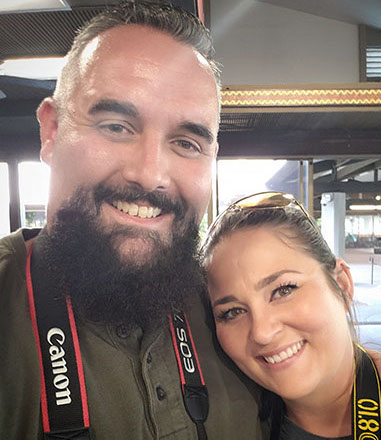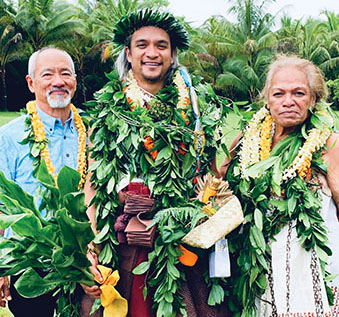
Future Forest Nursery: Say YES to Planting Trees
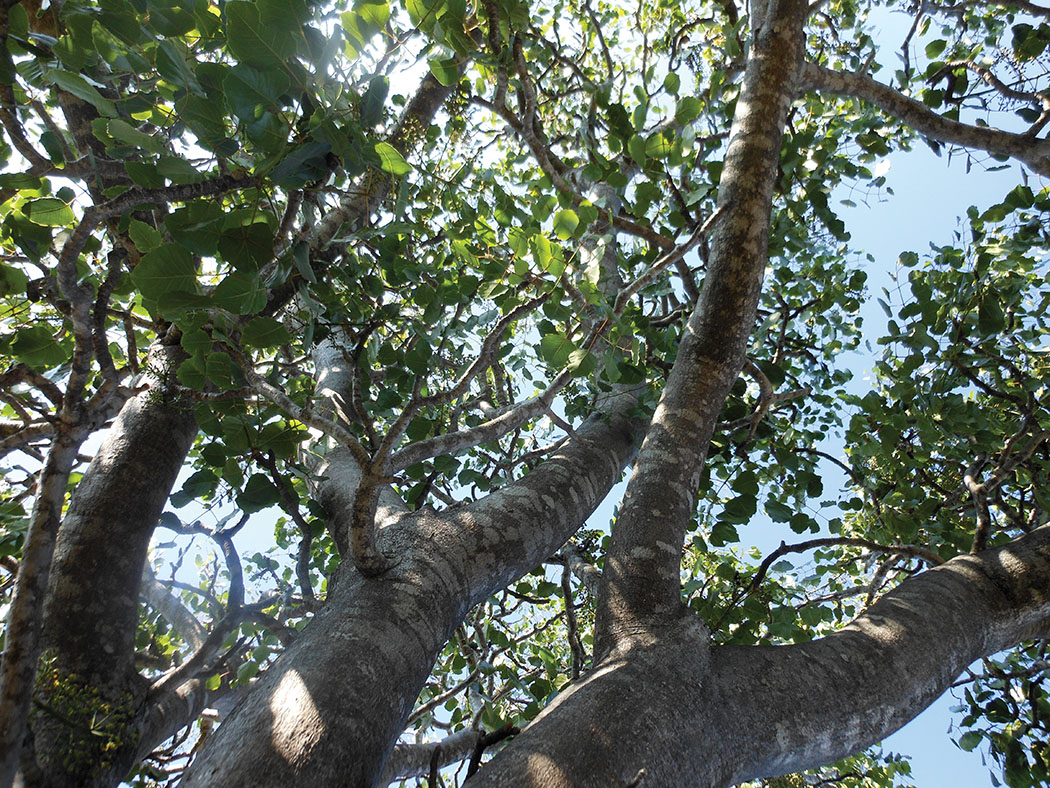
By Fern Gavelek
“Trees are poems that the earth writes upon the sky.”—Khalil Gibran
Trees make us look up. Their canopy provides shade and collects rain to replenish the watershed. Their roots sequester carbon, mitigating global warming, and store rain to prevent runoff. Trees provide a home to birds and creatures of the forest. Their parts are used to provide lumber, paper, fruit, nuts, and assorted products desired by humans. Their outstretched limbs are a favorite of children for climbing and hanging swings.

Horticulturist Jill Wagner of Kailua-Kona agrees with all of the above, adding she “believes in the trees.” She also says trees don’t get enough credit for their role of sustaining life on Earth.
“Many scientists and environmentalists say the best thing an individual can do to support the planet is to plant a tree,” she explains. “I believe planting a tree is an act that says ‘yes’ to life and to keeping our planet in equilibrium. With the reality of climate change upon us, it is an important action that individuals can take, if not at home, then with a community project that is doing a large-scale planting.”
Through her business, Future Forests Nursery (FFN), Jill not only helps people plant trees, she also maps out a friendly habitat for them to prosper while propagating, from seed, the chosen species to stock it. This wholistic approach of addressing the entire landscape is at the heart of Jill’s business mission, and is what makes her tick.
“I believe it is important to take care of nature because nature takes care of us, and we have to reciprocate,” she details. “I learn so much from nature; it is abundant and generous, and it is resilient and preserving. To me, nature and forests are the key to our future, hence the name of my company.”
A Life-Long Love of Nature
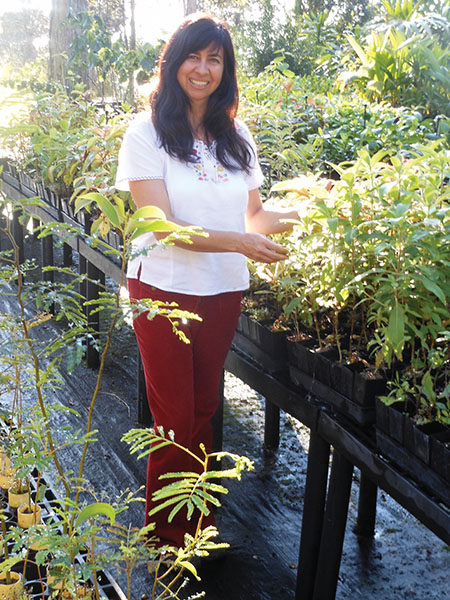
Jill has been growing plants in Hawai‘i for nearly three decades; however, she grew up in Southern California where her family had a special relationship with the local parks and gardens. She reveled in the beauty of nature at family gatherings and “grew up going to the best gardens” including the Los Angeles Arboretum, the Huntington Botanical Gardens, Descanso Gardens, and the Rancho Santa Ana Botanic Garden.
“My grandmother and mother are plant lovers and I became one as well,” she adds. “My mother, who was born in Ecuador, helped cultivate my interest in healing plants.”
Jill moved to Hawai‘i in the early 1990s to grow plants with her boyfriend, Terence McKenna, an ethnobotanist who had worked with healing plants from the Amazon and other regions. The couple was interested in raising healing plants and during this time Jill studied and read about ethnobotany.
“I was totally immersed in Hawai‘i’s natural environments,” she recalls.
Starting in 1994, Jill worked at the Amy B.H. Greenwell Ethnobotanical Garden, where she practiced propagation and conservation of many native and canoe plants for five years. Canoe plants were brought to Hawai‘i by migrating Polynesians.
“I am fascinated with the origins of plants and this garden provided a rich learning environment,” Jill notes. “I like to understand where plants originated from, what role they served in the ecosystem, and how they were used by humans. I always pay attention to plant families when I visit gardens and I always visit gardens wherever I go in the world.”
While working with Hawaiian plants, Jill learned how they came to the islands over long periods of time, many overcoming hurdles for survival such as the journey via wind and sea. She found out how these plants adapted to live in their new habitat and acquired pollinators.
“When I see a Hawaiian ecosystem, I feel I am seeing harmony,” she details. “I see this because the plants are gentle and it seems like every one has its place. The plants here did not have to develop strong survival mechanisms such as thorns and poisonous chemicals because there were no large animals here in pre-human times. Therefore, the ecosystems are very gentle looking to me, with lots of very interesting growth habits.”
Future Forests Nursery
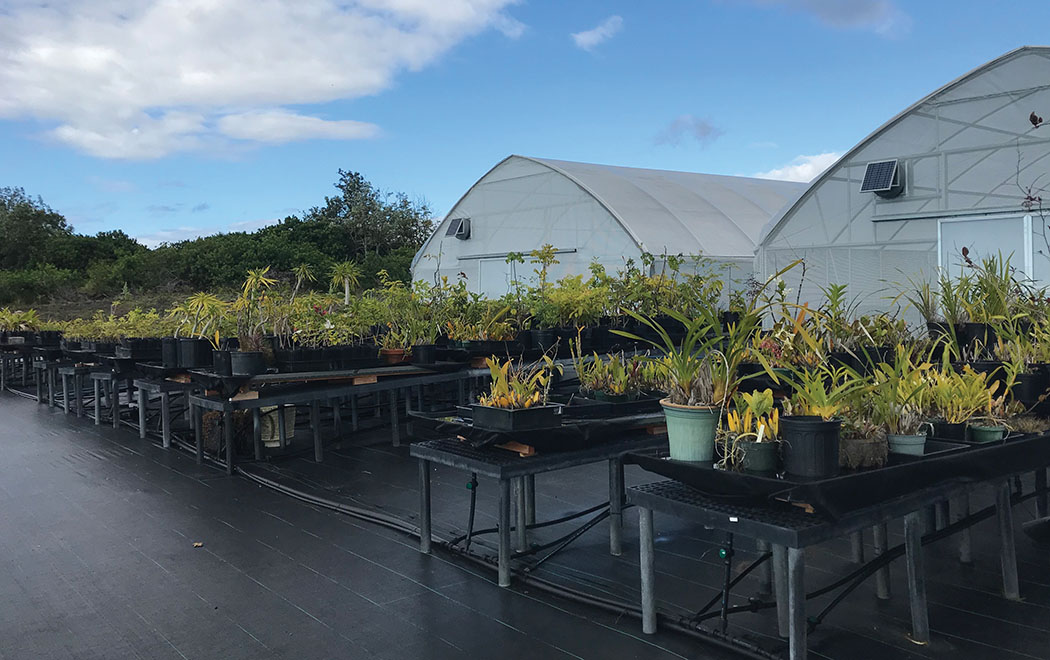
After many years of propagating plants, Jill decided it made sense to help people plan the restoration of their properties. She founded FFN in 1995 and continued her interest in native plants, earning a bachelor’s degree in ethnobotany from University of Hawai‘i at Hilo.
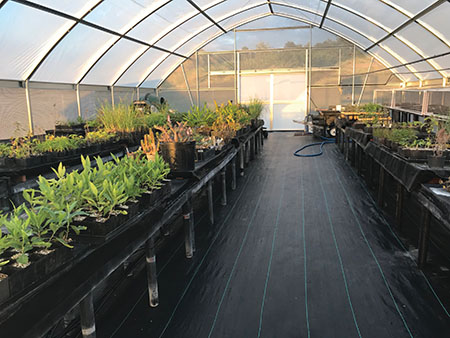
“I mostly encourage native planting when people have large enough properties to support habitats for the ecosystem they need,” she explains. “I’m not into clients collecting plants that are inappropriate for the site, and collecting for collecting’s sake.” If Jill evaluates that an ecosystem restoration isn’t feasible, she encourages agroforestry, which incorporates many “layers,” such as timber trees, understory, fruit and nut orchards, ponds, and animals. “For example, there are ways to graze sheep and cattle in silviculture [hardwood] plantings,” Jill explains.
At FFN, her focus is to tell a client what is important for the health of the area’s ecosystem. This helps them to better understand the big picture of what is being proposed to create a healthy environment. Jill says when she begins a project, she spends on-site time observing what is going on and “getting a feel for the land.” Next, she imagines the “plant palette” she is going to use and visualizes how the plants will look when they are mature. She also considers what the ecosystem would have been like in pre-human times, to better understand the land.
Planting with Regard to Place
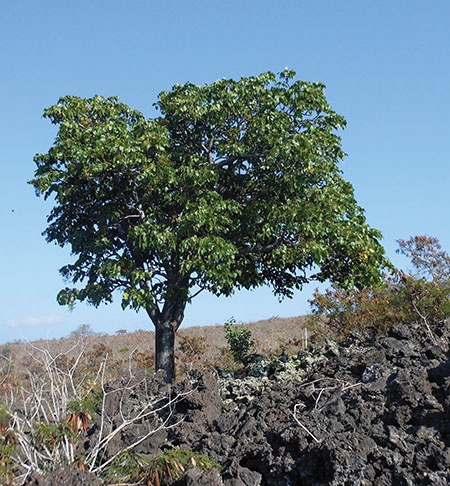
“One of the things that has really impacted my thinking about working with plants is hearing Edward O. Wilson, one of the great evolutionary biologists of our time, talk about how we can save the planet—and ourselves,” Jill muses. “If we have regard for place, then we will learn about nature where we live and preserve the plants from that region. By doing this all over the world, the plants of every place will not be lost, thus we are preserving unique habitats and species, which equals diversity. Diversity is the key to health and survival.”
Jill emphasizes that bringing in plants from other places without regard to the native ecosystem is a disservice to the environment as the introduced plants, with better survival strategies, often push out the native plants. She explains, “We replace what has taken thousands and thousands of years to settle and survive in a place [here] and replace it with what we like. Then we get monotypic strands of those aggressive plants. That is the reason I pay attention to the origins of plants, and although I do grow plants and trees from other places, I try to understand a lot of things about their seed production and requirements for survival. I’m not just a collector of pretty things. I have learned when I make mistakes to take things out.”
FFN has been busy doing native plant restoration in Kona for several years. Current projects include koa forestry, plus dry forest restoration at La‘i ‘Ōpua for the Department of Hawaiian Homelands and the endangered plant habitat at the Pālamanui Preserve. Jill says the dry forest is “an extremely endangered, very rare ecosystem” with many species. Located on the isle’s leeward side, it is also where people want to live.
The koa project is at the top of the Kaloko area, where Jill is restoring the forest and planting understory species that have been diminished due to past land use, such as logging and cattle grazing. “We are rehabilitating the forest and supporting the many native birds there,” she details.
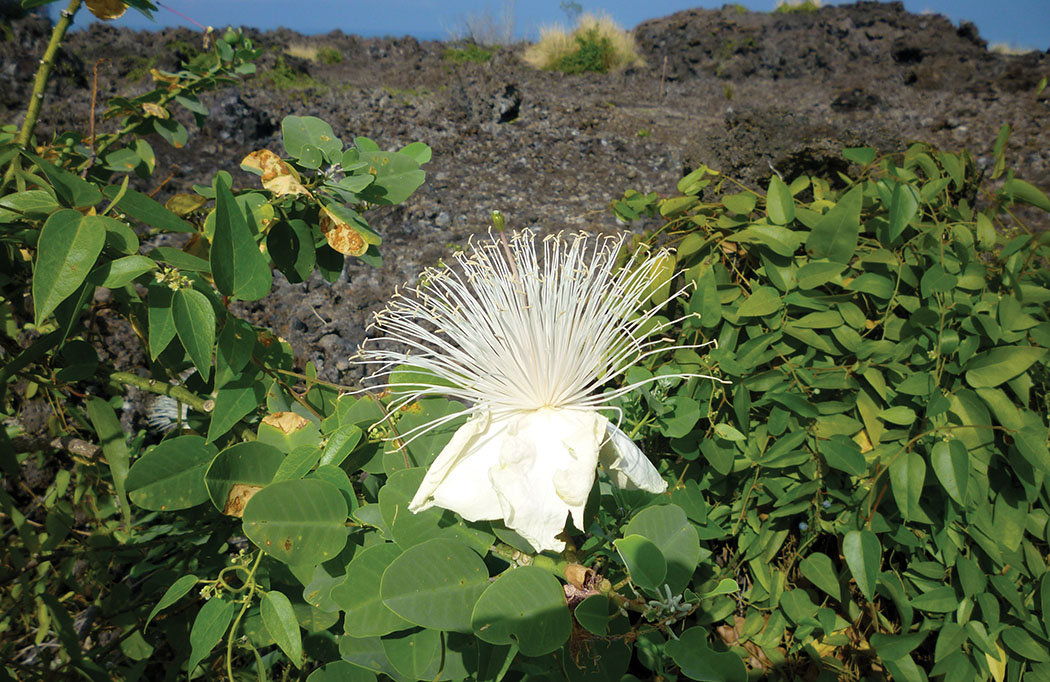
Saving Seeds is Important
Claiming trees and reforestation are her life’s passions, Jill simply states she “loves to help people, and to plant.” With this in mind, she is dedicated to collecting seeds and saving them for the future. She serves as director of the Hawai‘i Island Seed Bank, part of the statewide Hawai‘i Seed Bank Partnership overseen by Laukahi Conservation Network. In this capacity, she meets with other island seed banks to discuss priorities for conserving Hawai‘i species and share best practices for seed banking. She also collaborates with the nation’s largest seed bank in Colorado and the Millennium Seed Bank at England’s Royal Botanic Gardens, Kew—the largest native seed bank in the world.
Ka ‘Ahahui ‘O Ka Nahelehele, an organization dedicated to dry forest preservation, administers the Hawai‘i Island Seed Bank. People bring their seeds to Nahelehele to clean, dry and store for restoration and conservation projects, and also for viability testing. The seed bank is currently doing a project in conjunction with the Lyon Arboretum Seed Lab to collect ‘ōhi‘a seeds in the wake of the Rapid ‘Ōhi‘a Death outbreak. Named ‘Ōhi‘a Love, the project offers workshops on how to collect seeds and asks residents for property access to collect seeds.

“People can adopt a tree so seed can be saved on their behalf,” shares Jill. She says the more seed collected the better, as larger volume means better seed diversity for future ‘ōhi‘a propagation, replanting, and research.
Jill also supports the Kohala Center’s Hawai‘i Public Seed Initiative; it involves farmers statewide growing food crops successfully adapted to Hawai‘i’s climate and making their seeds available to the public. She considers this a “bank of sustainability” and an important initiative addressing the need for Hawai‘i to grow more food.
And while Jill thinks supporting seed banks is important, her lifeʻs work lies in designing gardens and working with nature to “heal the land” and create beauty.
“My long-time vision and goal are to create a public arboretum,” she shares. “I have created gardens for private landowners, but I am not able to share the gardens with others. I want to create a garden that people can come to and learn about nature—and experience peace.” ❖
Photos courtesy of Jill Wagner
For more information:
forestnursery.com
laukahi.org
drylandforest.org
hawaiiseedgrowersnetwork.com
